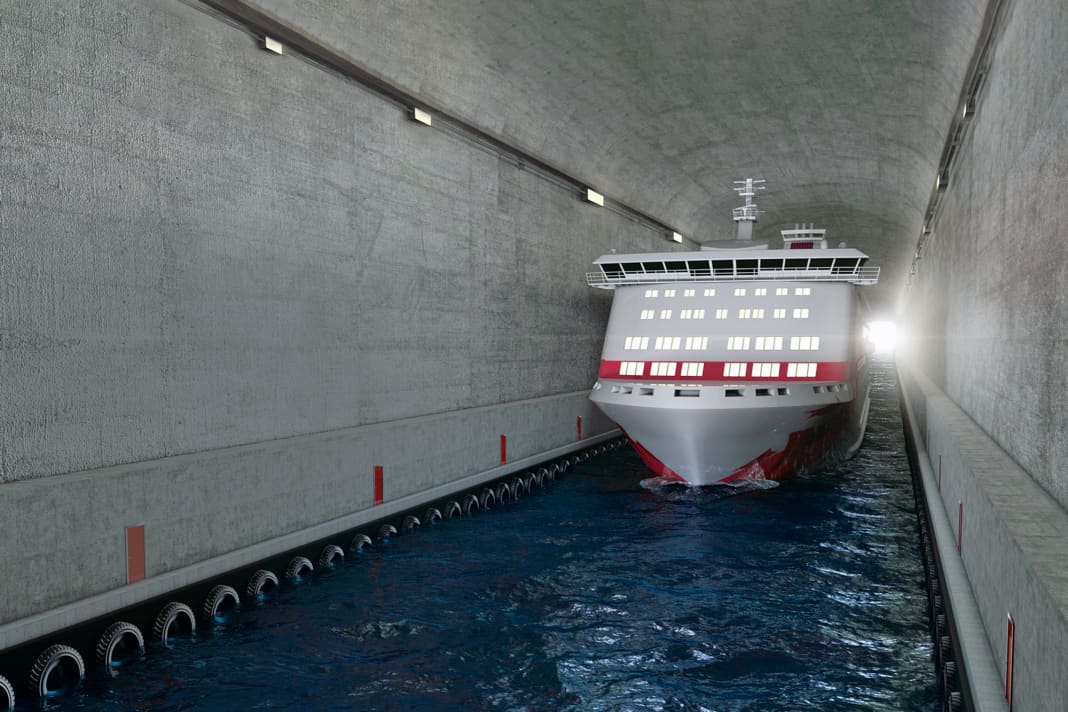





Imposing, ever larger structures have fascinated mankind since time immemorial - even, or perhaps especially, on the water. From the Pont du Gard of the Romans to modern engineering on locks, canals and bridges. The sheer ingenuity and the resulting benefits of some constructions are impressive. One example is the Panama Canal, which spares merchant ships the dreaded rounding of Cape Horn and shortens this route by an incredible 15,000 kilometres.
A similar goal, albeit on a smaller scale, is currently being pursued in Norway. A tunnel is to connect two fjords and replace the route around the infamous Vestkapp. The Vikings already feared this sea area and preferred to cross the mountainous mainland by boat at this point. Tunnelling is now due to start under this historic route in 2024, as there have been 34 deaths on the sea route since the Second World War. Fishermen in particular would benefit greatly from shorter delivery times, but the Hurtigruten's small cruise ships should also be able to make good use of the tunnel. Another building between genius and madness?
1st cruise underground
The world's first tunnel for cruise ships is planned in Norway. It will directly connect the Moldefjord and the Vanylvsfjord, crossing the Stadlandet peninsula. This would avoid the long and dangerous journey through the rough North Sea on this route. The journey through the 1.7 kilometre long ship tunnel is expected to take ten minutes and the shortened route would significantly reduce fuel consumption. Pleasure craft, fishermen and small cargo ships would also benefit from the planned tunnel. It is to be 50 metres high and 36 metres wide. Construction is scheduled to begin in summer 2024.



2. the Corinth Canal
The Corinth Canal is a popular shortcut between the Ionian Sea and the Aegean. The unique journey through the 6.3 kilometre long and almost 25 metre wide canal with its walls up to 79 metres high saves ships the long journey around the Peloponnese peninsula and Cape Maleas, which is notorious for its spring and autumn storms. The idea of such a waterway was more than 2,500 years old when it was realised after the success of the Suez Canal - the necessary rocky passage was completed in 1893. The canal is currently closed until further notice due to maintenance work.
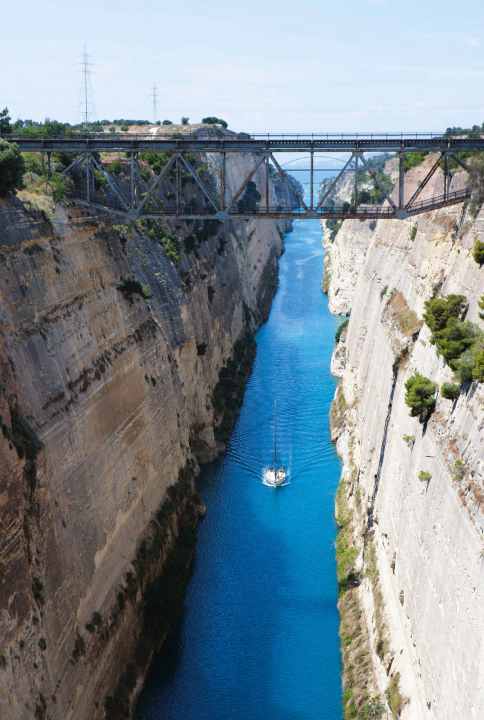
3rd ascent and descent for ships
The Polish Upland Canal connects western Masuria with the Baltic Sea, and the journey from Ostróda to Elblag takes eleven hours. However, the real challenge of the original trade route is the difference in altitude of almost 100 metres that has to be overcome. Instead of locks, so-called inclined planes were built in 1860. The ships are transported overland to the next higher or lower level by means of trolleys running on rails. The system is driven by water wheels or turbines.
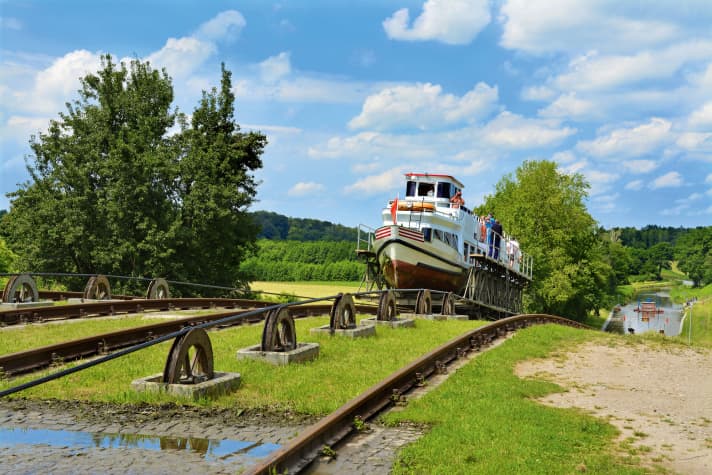
4. bridge for boats
The aqueduct in Håverud in western Sweden is the only place in Europe where a road, railway and waterway cross. When the Dalsland lake system was to be connected with a canal in the 19th century, the passage in Håverud was initially seen as an obstacle. However, the renowned canal and railway builder Nils Ericson made the construction of a 33.5 metre long water bridge possible in 1868. To this day, none of the 33,000 rivets have had to be replaced.
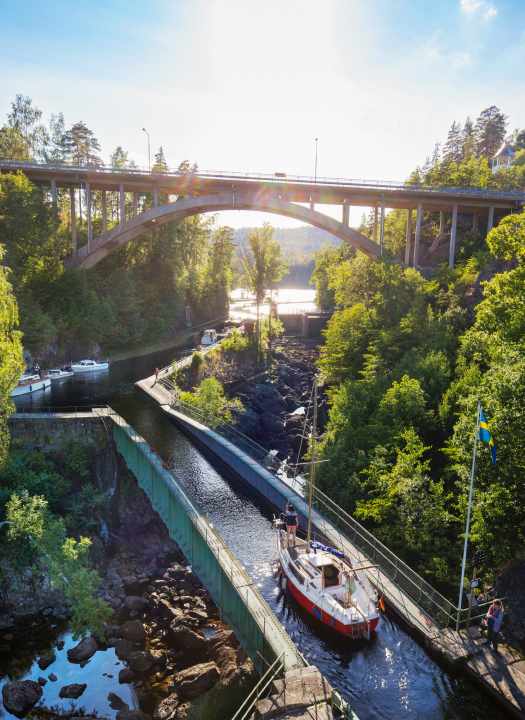
5. the Rendsburg transporter bridge
The Rendsburg transporter bridge is one of eight in the world. It has been connecting the two banks of the Kiel Canal since 1913. The gondola hangs from twelve cables under the Rendsburg railway bridge and floats above the water. The crossing at a height of three metres above the water is free of charge and only takes 1.5 minutes. In summer, the transporter bridge operates from 5 a.m. to 11 p.m., so picturesque sunrises such as the one in the picture on the right are not a fake, but an adventure that can be experienced by everyone. In 2016, the ferry collided with a freighter, which is why it was replaced with a new one in 2022 at a cost of 13.5 million euros.
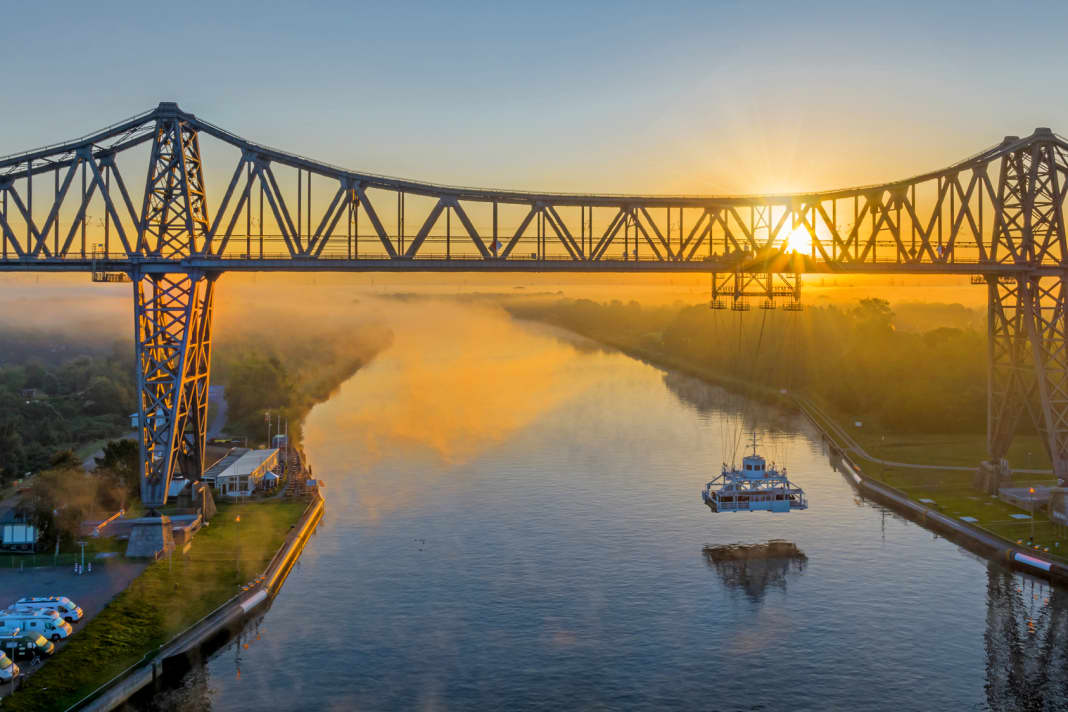


6. the boat lift in Niederfinow
The new ship's hoist in Niederfinow can move 9,800 tonnes over 36 metres in just three minutes. Compared to the old one, this is more than twice as much weight in just over half the time. The 125 metre long trough is suspended from 224 ropes that run over 112 double-grooved pulleys. The ship's hoist is driven by eight electric motors. After an eight-year delay, the new building has been in operation since autumn 2022. The structure cost 520 million euros instead of the planned 285 million euros. The old ship's hoist was built in 1934 for 27.5 million Reichsmarks and is still in operation today. It is the oldest still in operation in the whole of Germany. Guided tours are offered daily for both boat lifts in Niederfinow.
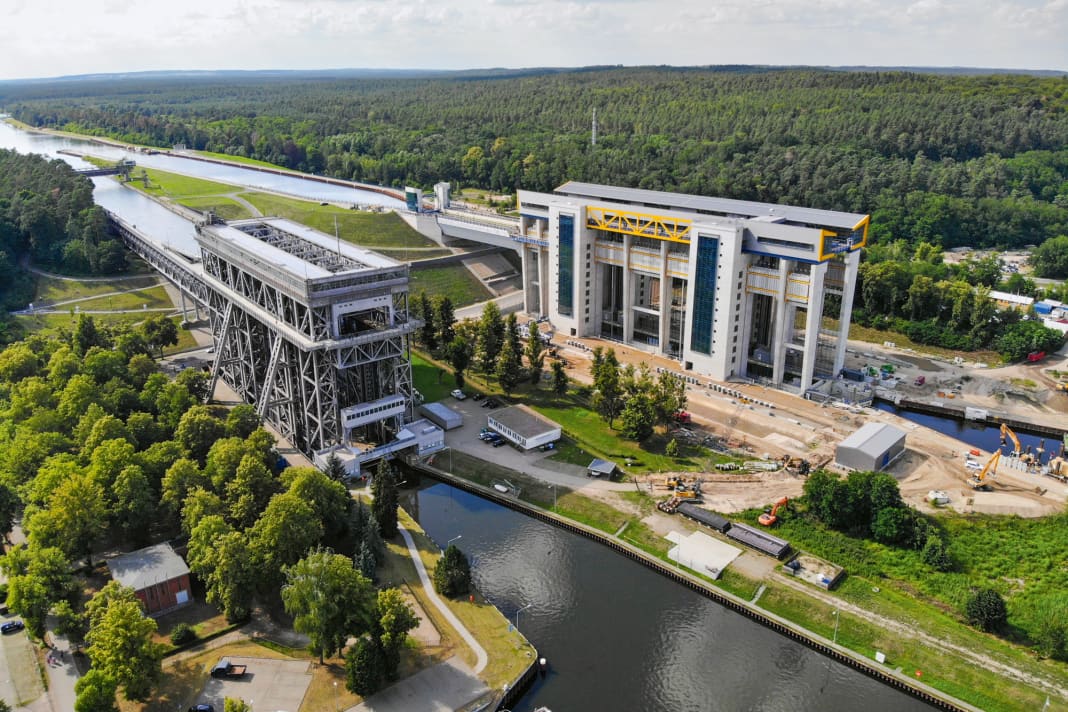


More about buildings:
7. two aqueducts on the Göta Canal
Want to swim across the moving cars with your own yacht? There are a total of two aqueducts on the Göta Canal in Sweden that make this possible. One of them is in Borensberg, the other in Ljungsbro (photo). The aqueduct in Ljungsbro dates back to 1970 and relieves road traffic into the town and to the local chocolate factory. There are also similar structures in Germany. With a length of 918 metres, the trough bridge in Magdeburg is the longest canal bridge in the world. An incredible 12,400 tonnes of structural steel were used. It has been carrying the Mittelland Canal over the Elbe since 2003. Compared to the original route via the Magdeburg-Rothensee ship lift and the Niegripp lock, this saves no less than three hours travelling time.
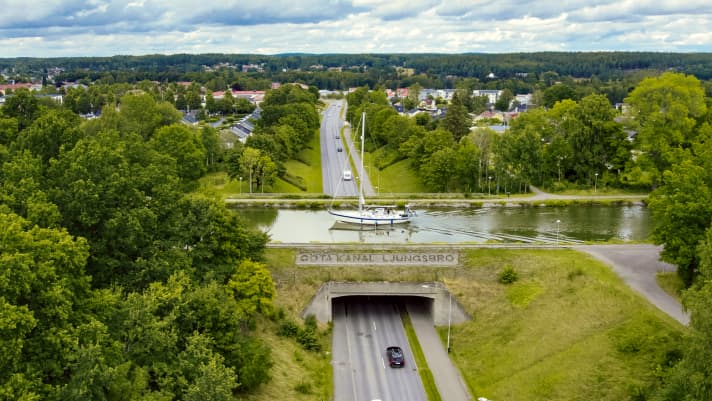
8. the largest lock staircase on the Göta Canal
The Carl-Johans locks in Berg are the largest lock stairs on the Göta Canal. Seven chambers connected in series make it possible to overcome the height difference of 18.8 metres. Located around ten kilometres north of Linköping, the lock staircase connects the canal with Lake Roxen. It is almost one kilometre long and is one of Sweden's most famous technical structures. The Carl-Johans locks are part of a total of 58 locks on the 190-kilometre-long canal, which runs from Mem in the east to Sjötorp, where the canal flows into Lake Vänern.
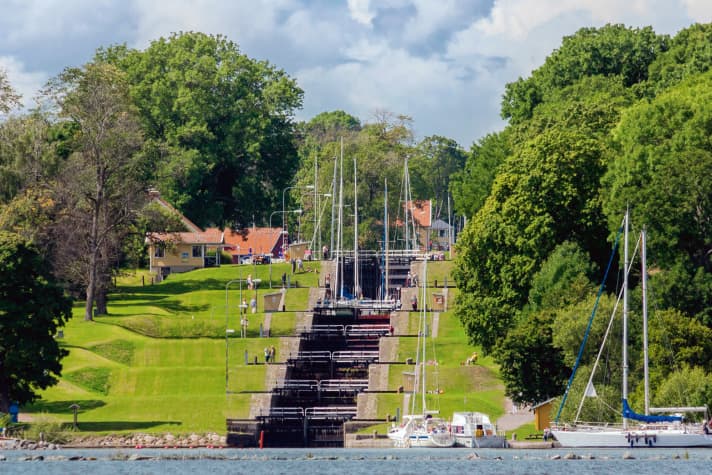
9. through locks around Cape Horn
Today, the Panama Canal, which opened in 1914, is one of the most important waterways in the world. However, the canal between the Atlantic and Pacific Oceans is considered a modern wonder of the world for good reason. Its construction cost almost 30,000 lives and took over 20 years. The challenge was the difference in height between the two oceans, which was not initially taken into account. The Panama Canal now has five locks that solve the problem. The canal and the man-made Lake Gatún lie above both sea levels due to the different tides, which is why locks have to be used on both sides. The large picture shows the Gatún locks, which lead from the Atlantic through the lake behind them towards the Pacific. At some of the locks, cogwheel railways ensure that ships can pass through the locks quickly and safely. The cogwheel railways travel from one lock chamber to the next on ramps that are up to 45 degrees steep.
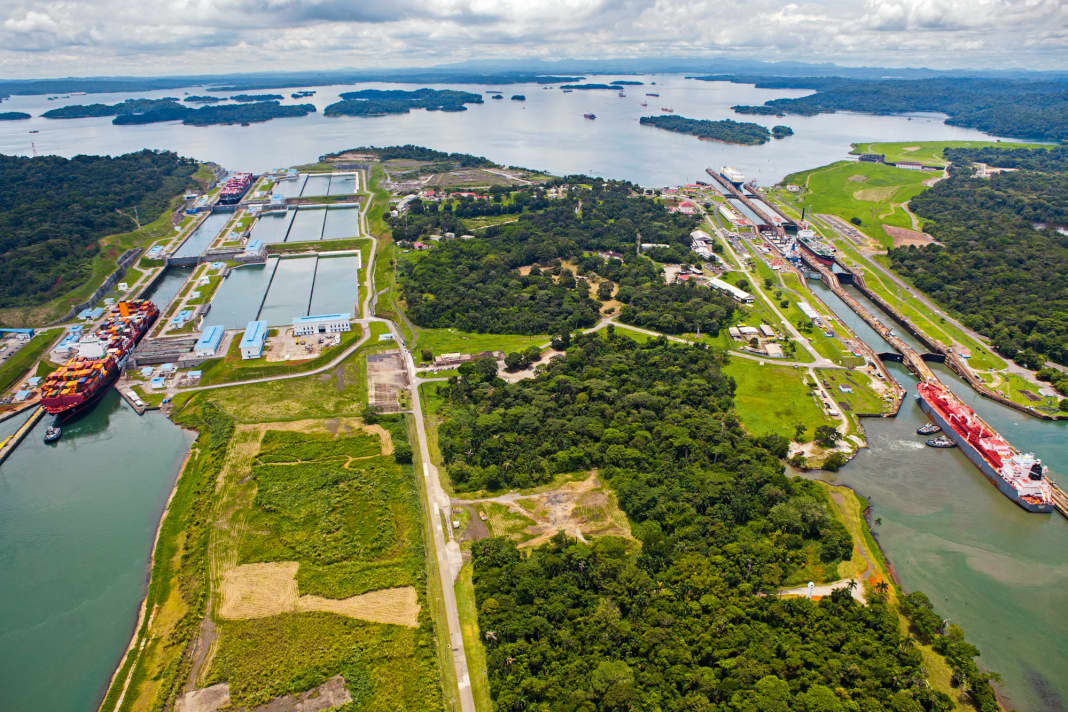


10. the Tower Bridge in London
Tower Bridge is probably the most famous maritime structure in this collection. It opens twice a day on average, and boats over nine metres in length can request an opening. In 2019, the eleven crews of the Clipper Race were sent off with a parade across the symbolic bridge. Opened in 1894, the Tower Bridge is 244 metres long and the towers are 65 metres high. Every year, the combination of suspension and bascule bridge attracts half a million visitors.
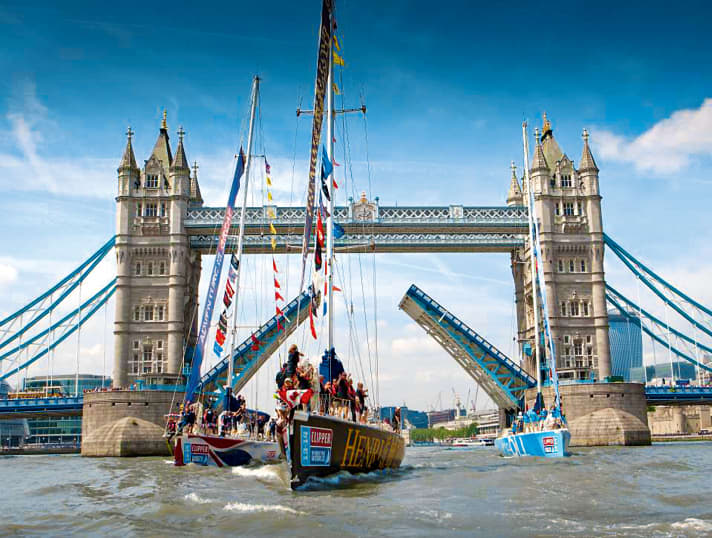
Book launch: "Maritime Monuments - Spectacular Architecture on the Waterfront"
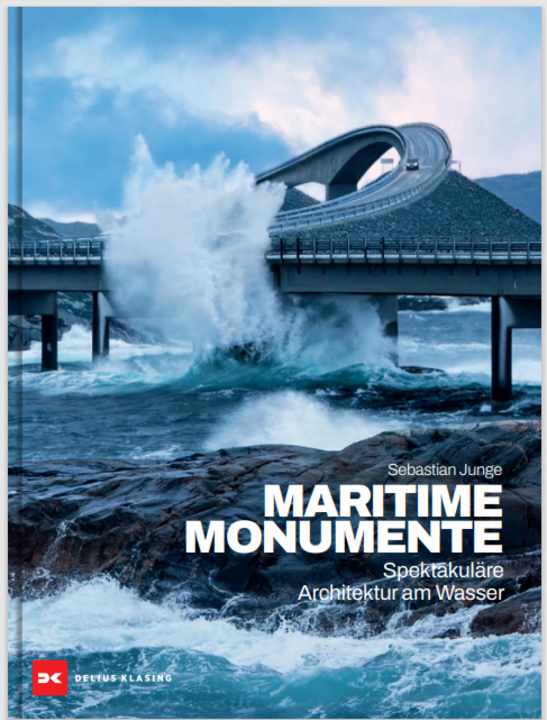
The new book is published as an illustrated book by Delius Klasing Verlag and focuses on the fascinating buildings on the water. Author Sebastian Junge presents a unique compilation of monuments of the seas that will delight architecture enthusiasts, water sports fans and tourists alike.
The impressive structures presented in the book are a testament to the art of engineering and impressive human endeavour. Whether it's shortcuts, connections or overcoming differences in height - the structures on the water offer spectacular sights and show the diversity of water mobility.
The illustrated book is characterised by outstanding photos that depict the impressive architecture of the monuments in great detail and in an impressive manner. A must for anyone interested in impressive buildings on the water and who wants to experience the beauty and diversity of maritime engineering.
- You can order the book "Maritime Monuments: Spectacular Architecture on the Waterfront" at here order.

